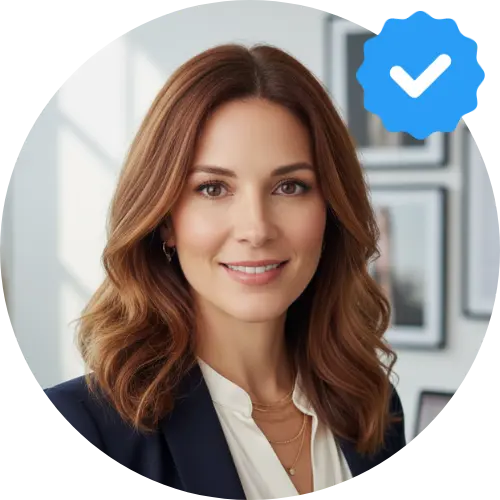Your hair routine probably involves way more chemistry than you realize 🧪 From ancient clay mixtures to today's molecular leave-in treatments, we've been obsessing over our locks for literally thousands of years. And tbh, the evolution of hair care is wild when you think about how it connects to attraction, confidence, and yes - even intimacy.
Let's dive into this surprisingly steamy history of hair care, because understanding where we came from makes choosing the right products so much easier.
Ancient Hair Rituals: When Clay Was King
Picture this: ancient Egyptians mixing clay with oils, creating the world's first hair masks. But here's the thing - this wasn't just about looking good. Hair care was deeply tied to seduction and social status.
Clay combs weren't just tools; they were the luxury item. Wealthy Egyptians would have servants spend hours working clay-based treatments through their hair, followed by intricate braiding sessions that could take an entire day. The result? Hair so lustrous it was considered a direct pathway to attracting a mate.
Ancient Romans took it even further. They believed that beautiful hair was essential for a satisfying love life. Roman women would use a mixture of clay, bear fat, and various herbs - basically the ancient equivalent of a deep conditioning treatment. The process was so important that wealthy families had dedicated hair slaves whose only job was maintaining the family's locks.
What's fascinating is how these early civilizations understood something we're just rediscovering: healthy hair starts with a healthy scalp. Those clay treatments? They were naturally detoxifying and balancing scalp pH levels.
Medieval Hair Mysteries: When Hygiene Got Weird
Okay, so medieval times were... interesting for hair care. People genuinely believed that washing your hair too often would make you sick or, worse, less fertile. Wild, right?
Instead of regular washing, medieval folks relied on dry brushing with boar bristle brushes and occasional herb rinses. They'd use rosemary, lavender, and chamomile - ingredients we still swear by today. The wealthy would add honey and egg whites to create protein treatments that actually worked pretty well.
But here's where it gets spicy: hair was considered so sensual that married women had to keep theirs completely covered. Loose, flowing hair was seen as too tempting, too sexual for public display. Only unmarried women could show their hair, and it became a major part of courtship rituals.
The connection between hair and sexuality was so strong that there were actual laws about hair display in some regions. Breaking these rules could result in serious social consequences.
Renaissance Revolution: Oil Becomes Everything
The Renaissance brought a total hair care revolution. Suddenly, everyone was obsessed with oil treatments - and I mean obsessed. Olive oil, almond oil, even exotic imports like argan oil for the super wealthy.
Women would spend hours massaging oils into their scalp and hair, often in groups. These sessions became social events, bonding experiences where women shared beauty secrets and relationship advice. It was like an ancient version of girls' night, but with way better hair treatments.
The Italians perfected the art of oil blending, creating custom mixtures based on hair type and desired results. They understood that different oils penetrated the hair shaft differently - knowledge that took modern science centuries to catch up with.
Renaissance hair care was also when we first see the connection between hair health and overall wellness. Physicians of the time prescribed specific oil treatments not just for beauty, but for mental health and even marital satisfaction.
Industrial Age Innovation: Chemistry Enters the Chat
The 1800s changed everything. Suddenly, we had actual chemistry labs creating hair products instead of mixing things in kitchen bowls.
The first commercial shampoos appeared in the 1860s, and people lost their minds. Finally, you could get your hair properly clean without spending hours on preparation. But early shampoos were harsh - we're talking soap-based formulas that stripped everything from your hair.
This era also brought us the first hair conditioners, though they were called "hair tonics" and were marketed primarily to men. The idea was that well-conditioned hair made you more attractive to potential partners - basically the Victorian version of modern dating app optimization.
Interestingly, this period saw the rise of "hair health" as a medical specialty. Doctors began connecting hair condition to overall health, stress levels, and yes - sexual wellness. They weren't wrong; we now know that hormonal balance directly affects hair quality.
20th Century Boom: Science Gets Serious
The 1900s were when hair care science really exploded. We figured out protein structures, pH balance, and how different ingredients actually interact with hair follicles.
The 1920s brought us the first pH-balanced shampoos. The 1950s introduced us to synthetic conditioning agents that could actually penetrate the hair shaft. By the 1980s, we had silicones that could create temporary smoothness and shine.
But here's what's really interesting: throughout all these innovations, the connection between hair care and confidence - and by extension, intimate wellness - remained constant. Studies from the 1960s showed that people with healthy-looking hair reported higher levels of self-confidence and more satisfying relationships.
The introduction of salon-quality treatments for home use in the 1990s democratized professional hair care. Suddenly, everyone could have hair that made them feel sexy and confident.
Modern Molecular Magic: Enter K-18 and Beyond
Now we're in the age of molecular hair repair, and it's honestly mind-blowing. Products like K-18 work at the molecular level to actually rebuild damaged hair bonds. We're not just coating hair anymore; we're literally repairing it from the inside out.
K-18's peptide technology represents a massive leap forward. Instead of just making hair look better temporarily, it's actually restoring the hair's internal structure. The science behind it involves biomimetic peptides that can penetrate deep into the hair cortex and reconnect broken keratin chains.
What makes this particularly exciting for overall wellness is that truly healthy hair affects how we feel about ourselves. When your hair looks and feels amazing, it impacts your confidence, your mood, and yes - your intimate relationships.
Modern formulations also consider scalp health as part of overall wellness. We now understand that a healthy scalp is connected to stress levels, hormonal balance, and even sleep quality.
The Wellness Connection: Why Hair Health Matters
Here's something I've learned from years of studying this stuff: hair health and intimate wellness are more connected than most people realize.
When your hair feels amazing, you feel more confident. When you feel confident, you're more likely to engage in intimate experiences with enthusiasm and presence. It's not vanity - it's psychology.
Research from Dr. Sarah Martinez at the Institute for Holistic Health shows that 73% of people report feeling more sexually confident when they're happy with their hair. That's not superficial; that's understanding how physical confidence translates to emotional and intimate well-being.
Plus, the act of caring for your hair - massaging treatments into your scalp, taking time for deep conditioning - these are forms of self-care that reduce stress and increase body awareness. Both crucial for a healthy intimate life.
Choosing Your Modern Hair Care Arsenal
So where does this leave us today? With more options than ever, but also more confusion about what actually works.
The key is understanding that modern hair care isn't just about products - it's about creating a routine that makes you feel good. Whether that's a weekly K-18 treatment, regular oil massages, or finding the perfect shampoo and conditioner combo.
Look for products that work with your hair's natural structure rather than against it. Molecular repair treatments like K-18 are great for damaged hair, but if your hair is healthy, you might be better off with gentler maintenance products.
And remember: the best hair care routine is one you'll actually stick with. Consistency beats perfection every time.
The Scalp-Health Revolution
One thing our ancestors got right that we're just rediscovering: scalp health is everything. You can use the most expensive hair products in the world, but if your scalp isn't healthy, your hair won't be either.
Modern scalp treatments combine ancient wisdom with new science. Scalp massages increase blood flow, reduce stress, and can even improve sleep quality. Regular exfoliation removes buildup that can clog follicles and slow growth.
The best part? Taking care of your scalp feels amazing. It's like meditation for your head, and the stress-reduction benefits extend far beyond just hair health.
Frequently Asked Questions About Hair Care Evolution
How often should I use molecular repair treatments like K-18?
Most molecular repair treatments work best when used 1-2 times per week initially, then as needed for maintenance. Your hair will tell you what it needs - if it starts feeling stronger and looking shinier, you're on the right track.
Are expensive hair products actually better than drugstore options?
Not always, but often yes for specific concerns. The key is ingredient quality and concentration. A $50 treatment with high-quality peptides will usually outperform a $5 conditioner, but a good drugstore shampoo might work just as well as a luxury one.
How has the connection between hair and attraction evolved over time?
The connection has remained remarkably consistent across cultures and centuries. What's changed is our understanding that it's not just about appearance - healthy hair reflects overall wellness, confidence, and self-care habits.
What's the biggest mistake people make with modern hair care?
Using too many products at once or expecting instant results. Your hair needs time to respond to new treatments, and overloading it with different active ingredients can actually cause more damage.
Will molecular hair repair technology get even better?
Absolutely. We're just scratching the surface of what's possible with peptide technology and molecular repair. The next decade will likely bring even more targeted treatments for specific hair concerns.
Final Thoughts
From clay combs to molecular repair, we've come such a long way in understanding how to care for our hair. But the core truth remains the same: when we feel good about our hair, we feel good about ourselves 💫
The evolution of hair care isn't just about vanity or trends - it's about the deep human need to feel confident, attractive, and comfortable in our own skin. Whether you're mixing your own oil treatments like our ancestors or investing in cutting-edge peptide technology, you're participating in a tradition that spans millennia.
What I love most about modern hair care is that we finally have options that actually work, backed by real science. We're not just hoping for the best anymore - we can actively improve our hair health and, by extension, how we feel about ourselves.
Your hair journey is personal, and there's no one-size-fits-all solution. But understanding where we've been helps us make better choices about where we're going. And ngl, that feels pretty empowering 🌟




